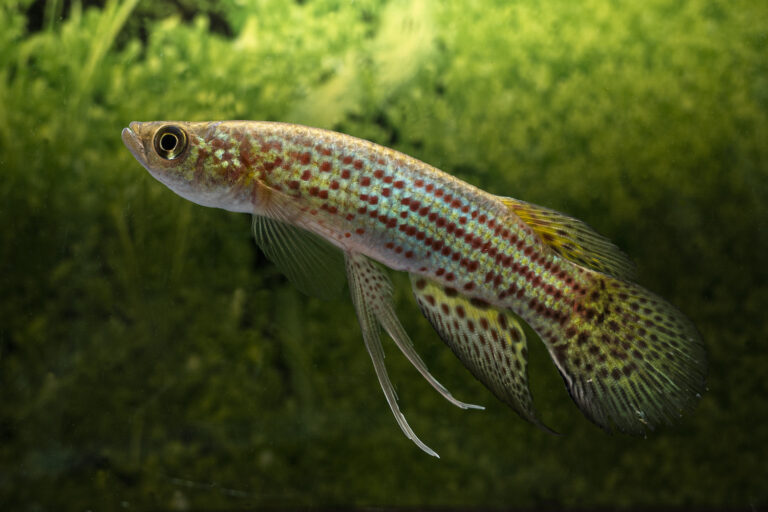In Brazil, folklore says that colorful fish fall from the clouds when it rains. These “fish from the clouds” come to Earth to live in newly formed ponds. Could this magical folk story be true?
Colorful fish do appear when it rains. But instead of falling from the sky, they actually pop out of the ground!
These fish are called rivulids, a group of killifishes. They live in temporary small bodies of water. There are about 500 species of rivulids in Brazil. Rivulids are tiny, less than 10 centimeters (4 inches) in length. They come in a great variety of colors. Rivulids are divided into two groups, annuals and non-annuals. Annual rivulids appear only once a year, and non-annuals appear year-round.

A local man showing specimens of Pituna xinguensis collected during the Amazonian rivulid expedition. Image by Gustavo Fonseca for Mongabay.
The annual rivulids live in temporary aquatic freshwater environments like ponds, wetlands, marshes, lakes, and areas bordering streams which form during the rainy season. They lay their eggs in sand or mud substrate, which then dries during the dry season.
Rivulid eggs estivate, which means that they are dormant throughout the dry season, when water is scarce. When it rains, the rivulid eggs hatch. Months or even years may go by before the conditions are right and the eggs hatch!

A sample of the genus Trigonectes collected during the Amazonian rivulid expedition. Image by Gustavo Fonseca for Mongabay.
Rivulid fish species occur throughout Brazil, from the southern Pampas grasslands to the Amazon rainforest.
Most of the so-called “fish from the clouds” are endangered because their temporary wetland habitats are fragile. Rivulid habitats are threatened by human activities like farming and cattle raising. Construction and infrastructure works like roadways, ports, and hydroelectric dams also threaten the wetlands that rivulids depend on.
“There are rivulid species that occur in ponds alongside roadways, so when a highway is widened, it can be a threat to them. If a new lane is built over a spot where a pond had existed, that species is done for, it will cease to exist on that site,” says Márcio J. da Silva, a professor at the Federal University of Pará (UFPA).

An annual fish specimen from the species Pituna poranga. Image by Gustavo Fonseca for Mongabay.
Another problem for rivulids is that we lack basic knowledge about them. Conservation decision makers need good information order to protect species and their habitats.
“We know more about some parts of the Amazon than others. Depending on resources and structure,” says Carolina Dória, a professor at the Federal University of Rondônia (UNIR). “Right now, we estimate there are some 2,500 species [of fish in the Amazon]. But every year we have been investigating new species and getting to know a little more about some groups that were harder to study before, such as the rivulids, which we came to know about more recently.”

Leandro Sousa, left, observes fish specimens collected on the expedition. Image by Gustavo Fonseca for Mongabay.
Professor Dória and her colleagues are going on research expeditions through the Amazon to study where rivulids and other fish exist, and to document their habitats. In the process they are finding new species of rivulid fish that have never been described by science.
A boat on the Xingu River carrying a research team to collect data. Image by Gustavo Fonseca for Mongabay.

Scientists and conservationists are working to use the scientific findings about rivulids to help construction planners and government decision makers. Their goal is to help protect the fish and their habitats from being destroyed in development projects. They want these “fish from the clouds” to have a bright future!
David Brown adapted this story for Mongabay Kids. It is based on an article published on Mongabay.com, by Adelle Santelli (text) and Gustavo Fonseca (images) on 6 December 2023 | Translated by Maya Johnson. This story was reported by Mongabay’s Brazil team and first published here on our Brazil site on Nov. 13, 2023.






